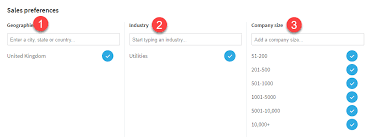Industry Targeting to Grow the Microsoft Power Platform Practice – Part 2
In Part 1 I highlighted the need for Microsoft partners to focus on an industry solution, how to decide which industry to focus on, and how to establish a “beachhead” to dominate that industry. In this post, I’ll share ideas for creating interest within the industry you’re targeting and how to build credibility through references and industry engagement.
With LinkedIn, you should be following the company Page of businesses within the industry you are targeting.
Set up a regular cadence of checking for updates and changes or use a tool to do this for you so that you are notified of changes.
Often the company job listings will show here, and you can see when new roles are advertised, or staff are moving on.
The water cooler of social media. A place you will get to see a different perspective of the industry you are targeting as well as gain visibility and establish engagement into the influencers in that industry.
Follow the company pages of your target business.
Facebook has encouraged businesses to set up company pages, and many have. Once again this provides you with a place that you can understand more about the business and what’s top of mind for them.
The target company’s blog is another place to engage as many blogs have commenting functionality.Make sure your photo and name are visible when you comment to encourage connection. Kickstart an engagement and discussion.
Set up search tools to get informed about any company announcements, shareholder reports or news that could be advantageous to how you engage with the business.
I have found LinkedIn Sales Navigator to be a fantastic tool that allows you to target the industry you want to focus on.
In this example, I am focusing on Geography of the United Kingdom, and the Industry of Utilities and you can see I have selected the various companies’ sizes:
From this, I get a list of 199 Companies that I can focus on.
Additional information I find helpful from LinkedIn Sales Navigator is:
Annual Revenue
Company Headcount
Technologies Used
Now that you have the above all sorted, it is time to raise your profile in the eyes of the target industry you are focusing on.
You need to establish a repetition of someone that has their finger on the pulse of the industry. A friend and confidant, an educator of change, and most importantly, a storyteller. Someone that knows how to tell the stories of the industry, successes and challenges, and the insights that can be learned from them.
Speakers are leaders so learn to become comfortable at public speaking engagements and then make yourself available to event organizers as a speaker.
Not to speak about your product necessarily, but as an opportunity to tell the stories of the industry and, from time to time, how your product created successful outcomes.
Blogs and White Papers are where you should start. But just like speaking, you need to create content that addresses the needs of the target industry. Again a great way to initiate engagement with the other members of the community and somehow standout on the industry.
As much as possible, develop a regular rhythm, and you will find you will soon get asked to speak to the various companies that want to tap into your expertise and open the door to you.
Yes, this will require work and focus, and you will reap the success it brings.
To establish your credibility, you need to build a portfolio of references.
When well-known companies lend their name to a reference, their repetition can endorse yours. But where do you start when you don’t have any?
As a stop-gap, I use Microsoft published case studies as a starting point, but this should be your short term strategy only. If they do not have what you need on the public website, talk to your Microsoft partner manager and see if they can get you what you need for your target industry. Often it may come from another country.
You need to build your repository of stories and never stop adding to that library. It should be a process that is automatically triggered as part of the way you do business. Remember to focus on the benefits your solutions created, not the product features.
This is a quote that includes the name of who said it, their title and their company; I would recommend you write the quote and get the person to sign it off for use, yes that needs to be in writing.
Sometimes the company you are working with will not provide their name, brand or story for a case study for any number of reasons. However, this should not stop you from writing the case study. Change the names and details to protect the company and its IP. You may also choose not to publish this case study publicly.
The gold standard is to get a fully branded case study that tells the story of how your technology empowered the company you worked for in the context of that industry.
This could be a short video or a written two-page case study or, better still, both. You will need to get various sign off approvals for this to happen.
This video is an example of a Microsoft funded case study:
https://youtu.be/IOzTj6ud-TQ
Please let me know in the comments below if this raises questions for you or if you have your own story to share.


